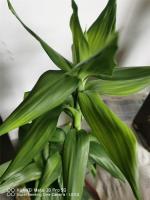Can I Plant Tomatoes in the Shade?
Tomatoes are one of the most popular garden vegetables around the world. They are easy to grow, delicious to eat, and bursting with flavor and nutrition. However, one question that often comes up for gardeners is whether tomatoes can be planted in the shade. In this article, we will explore this question and provide some insights into the best growing conditions for your tomato plants.
Understanding the Needs of Tomato Plants
Before we can answer the question of whether tomatoes can be planted in the shade, it's important to understand the basic biology of these plants. Tomatoes are warm-season crops that require plenty of sunlight, warmth, and moisture to thrive. They are sensitive to cold and frost, and prefer temperatures between 70-85 degrees Fahrenheit.
Tomatoes also require well-drained soil that is rich in organic matter, such as compost, manure, or peat moss. They need regular watering to keep the soil consistently moist, but not waterlogged. And they benefit from the support of stakes, cages, or trellises to keep their heavy fruit off the ground.
The Pros and Cons of Planting Tomatoes in the Shade
Now that we have a better understanding of the needs of tomato plants, let's consider the pros and cons of planting them in the shade. On the one hand, shade can provide some benefits to tomatoes, especially if you live in a hot, sunny climate. By providing some relief from intense sunlight, shade can help prevent sunscald, reduce water loss, and keep the plants cooler and more comfortable.
Shade can also provide some protection from pests and diseases, such as spider mites, whiteflies, and certain fungal infections. By reducing the amount of direct sunlight that reaches the leaves and fruit, shade can make it harder for these pests and diseases to thrive and spread.
However, there are also some drawbacks to planting tomatoes in the shade. For one thing, shade can limit the amount of sunlight that the plants receive, which can reduce their growth, yield, and quality. Tomatoes that are grown in the shade may be smaller, less flavorful, and less nutritious than those grown in full sunlight.
Shade can also increase the risk of certain plant problems, such as powdery mildew, which thrives in cool, damp conditions. And shade can make it harder to ripen tomatoes, as they need plenty of sunshine and warmth to develop their full color and flavor.
Tips for Growing Tomatoes in Partial Shade
If you are determined to grow tomatoes in partial shade, there are some steps you can take to optimize their growing conditions and improve their chances of success. Here are some tips to consider:
Choose a spot with the most sunlight available. If you only have a few options for planting tomatoes, choose the spot that gets the most sunlight, even if it's not in full sun all day.
Plant disease-resistant varieties. Look for tomato varieties that are resistant to common diseases, such as verticillium wilt, Fusarium wilt, and tomato mosaic virus.
Improve the soil quality. Adding compost, manure, or peat moss to the soil can help improve drainage, fertility, and water retention.
Provide extra water and fertilizer. Tomatoes in partial shade may need more frequent watering and more fertilizer than those grown in full sun.
Use shading materials strategically. If you have to use a shading material, such as a shade cloth or a tree canopy, make sure to place it on the west side of the plants, so that it doesn't block the morning sun.
Final Thoughts
So, can you plant tomatoes in the shade? The answer is yes, but with caution. While tomatoes can tolerate some shade, they still need plenty of sunlight, warmth, and water to produce healthy, flavorful fruit. If you decide to plant tomatoes in partial shade, make sure to choose the right varieties, improve the soil quality, provide extra care, and use shading materials wisely.
With the right growing conditions and a little bit of luck, you can still enjoy a bountiful harvest of delicious, juicy tomatoes, even in the shade.

 how many times do yo...
how many times do yo... how many planted tre...
how many planted tre... how many pine trees ...
how many pine trees ... how many pecan trees...
how many pecan trees... how many plants comp...
how many plants comp... how many plants can ...
how many plants can ... how many plants and ...
how many plants and ... how many pepper plan...
how many pepper plan...

































